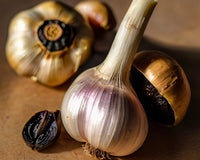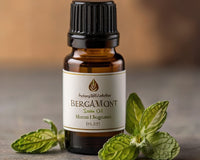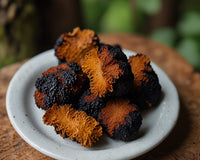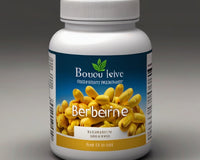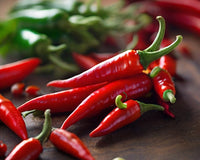What is konjac?
First, let’s take a look at the raw materials used to make konjac sponge.
Konjac, also known as Konjac; is a perennial herbaceous plant.
Konjac has various effects such as lowering blood sugar, lowering blood lipids, lowering blood pressure, losing weight, laxative, and appetizing.
The whole konjac plant is poisonous and should not be eaten raw.
Morphological characteristics of konjac
The underground tuber of Konjac is oblate and spherical, large, with thick petioles, cylindrical, light green, with dark purple spots, and palm-shaped compound leaves with a white interior.
The plant height is about 40 to 70 cm. There are bulbs underground. One plant has only long leaves, which are pinnately compound. The petioles are thick and long like stems. The flowers are purple-red, have a peculiar smell, and there are tubers underground.
The history of konjac
China began growing konjac as early as 2,000 years ago; its culinary history is quite long. Later, konjac was introduced to Japan from China and was deeply loved by the Japanese as a medicinal food. Konjac must be eaten at almost every meal, and it is also the most popular folk food in modern Japan. In some areas of Japan, it is clearly stipulated that primary and secondary school students must have konjac food in their meals.
Nutritional value of konjac
Konjac contains 16 kinds of amino acids, 10 kinds of mineral trace elements and luxurious dietary fiber, which has unique effects on preventing diabetes and high blood pressure.
Konjac is low in calories, low in fat and low in sugar. It can be said to be excellent in preventing and treating colon cancer, breast cancer and obesity. Not only can it fill you up, it can also cure diseases. It can also prevent and treat many common chronic diseases of the digestive system.
It can be seen that konjac is a "god-sent medicine"; eating it has great benefits.
Where does konjac originate?
Mainly distributed in Southeast Asia, Africa and other places; China, Japan, Myanmar, Vietnam, Indonesia and other countries.
Konjac production areas in my country are mainly distributed in Yunnan, Guizhou, Sichuan, southern Hubei, western Hubei and other places. Among them, the konjac resources in the mountainous areas around the Sichuan Basin are the most abundant.
Sichuan konjac production areas are mainly distributed in the Daba Mountains in eastern Sichuan. The Jinsha River Basin in the southwest is an important white konjac production area in my country.
Konjac flour is obtained by drying the tubers, peeling them, slicing them, drying them, crushing them, and sifting them.
7 major manufacturing techniques of konjac sponge
The raw materials of PUSPONGE konjac are taken from the wild plant konjac at a height of 600-1400m in the mountainous area, and are refined through a special process. Unique natural plant fibers cleanse the skin from deep levels and keep the skin away from dust. The erosion of various environmental pollution in modern society ensures that you have healthy skin and beautiful appearance.

1. Add konjac powder and calcium hydroxide to cold water and stir evenly.
Mix ingredients thoroughly to achieve an even blend. If the powder or air is mixed together, the product is incorrect, so this process is critical to achieving the highest quality and must be done with care.

2. Quickly pour the mixture into the mold.
This process is done carefully step by step to ensure no air or bubbles get in. Konjac will harden immediately in its liquid form, so if poured too slowly it won't form properly.
In the event of such a malfunction, the defective product will be added to the traditional Chinese delicacy konjac tofu for everyone to eat (haha.)

3. Arrange the formed konjac in a row on a large shelf and then solidify.
At this point, the sponge is still jelly-like. By placing them on a rack, they will slowly solidify into a firm texture. Let the setting process take place slowly so that the konjac becomes creamy and soft. This step is crucial to achieve a spongy surface.

4. Simmer the konjac on a rack for 5 hours until completely hard.
The "alkali heat curing" process is carried out to make konjac edible. The heat diffuses into the inside of the konjac and this process continues until it is completely hard.

5. Alien konjac sponge
The konjac is ready but still hot, so place it in a pan of water and let cool slowly to the core. In addition, freshly prepared konjac does not taste good at high temperatures.

6. Konjac drying process.
Air-drying process: A low-cost, old drying process, but the shape in the dry state is much smaller and the surface is shrunk and uneven.
Freeze-drying process: A new drying process, the cost is relatively high, but the shape is more regular and beautiful in the dry state, the water absorption speed is faster for the first time, and it is more conducive to the customer's primary user experience.
Freeze-dried products are our main advantage, with better quality and more favorable prices than other products.
The mechanisms used in this process are as follows:
-
By freezing the product, the water is separated from the solid material (konjac fiber) and the water is dispersed into ice.
-
By defrosting the product, the cold parts become porous.
-
Only the original elasticity of konjac fiber forms a sponge.
The product is then repeatedly frozen and thawed in a dedicated refrigerator until it is evenly frozen to the core.

7. Packing Konjac Sponge
The checklist confirms the following:
-
Is there any damage or foreign matter in the product?
-
Has it deteriorated or changed color?
-
Measure dimensions and weight
-
Check PH value, TU value, etc.
-
Enter the packaging stage.








